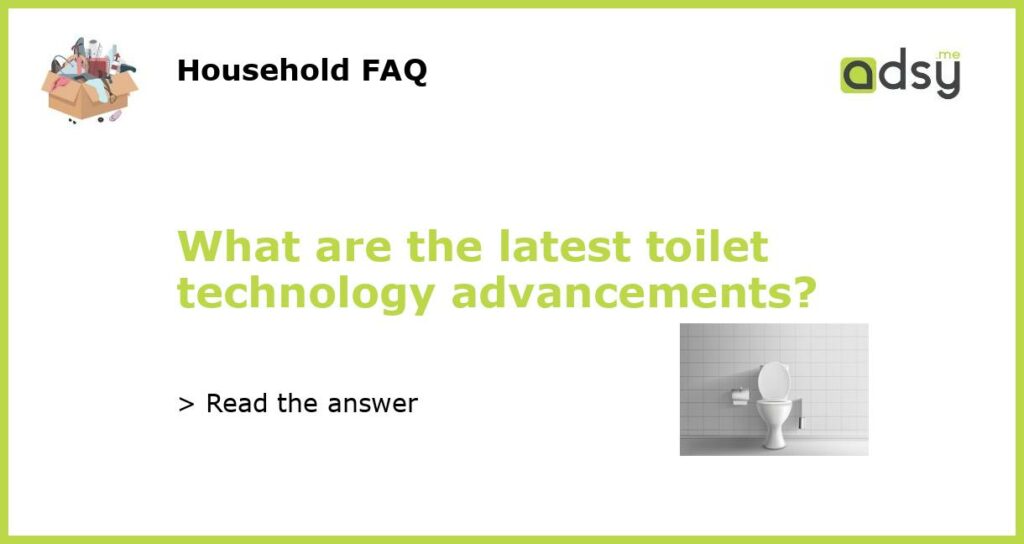Self-Cleaning Toilets: Revolutionizing the Bathroom Experience
In recent years, the bathroom industry has seen a remarkable surge in technological advancements, especially when it comes to toilets. One of the latest innovations in this field is the development of self-cleaning toilets. These state-of-the-art toilets are equipped with advanced cleaning mechanisms that minimize the need for manual cleaning and maintenance.
The self-cleaning function of these toilets involves the use of various technologies such as ultraviolet light (UV), electrolyzed water, and ceramic glazes. Some toilets use UV light to kill bacteria and viruses on the surface, while others use electrolyzed water to sanitize the bowl. Additionally, many self-cleaning toilets are coated with special ceramic glazes that prevent the deposition of dirt and stains, making the cleaning process even easier.
Not only do self-cleaning toilets save time and effort, but they also contribute to better hygiene levels. With the growth in public awareness regarding cleanliness and sanitation, these toilets have become highly sought-after in both residential and commercial settings.
Smart Toilets: Enhancing Comfort and Convenience
Another significant advancement in toilet technology is the introduction of smart toilets. These toilets are designed to provide a heightened level of comfort and convenience to users. They are equipped with a range of features such as automated flushing, heated seats, bidet functions, and even built-in music systems.
Automated flushing eliminates the need for manual contact with the flush handle, reducing the risk of cross-contamination. The option to adjust the seat temperature ensures a comfortable experience, while bidet functions provide a more effective and hygienic way of cleansing oneself after using the toilet. Some smart toilets even come with built-in music systems that can be controlled via Bluetooth, allowing users to personalize their bathroom experience.
These smart features not only enhance user comfort but also contribute to water and energy savings. Many smart toilets are equipped with sensors that detect user presence and adjust water usage accordingly. This helps to conserve water and minimize environmental impact.
Hands-Free Technologies: Touchless Innovations for Improved Hygiene
In light of the COVID-19 pandemic, there has been a significant emphasis on touchless technologies to reduce the spread of germs and ensure a more hygienic bathroom experience. This has led to the development of various hands-free innovations in the realm of toilet technology.
One such advancement is the touchless flushing technology, where toilets are equipped with sensors that automatically flush the toilet once the user finishes using it. This eliminates the need for physical contact with the flush handle, reducing the risk of germ transmission. Some toilets also feature touchless faucets, soap dispensers, and dryers, further enhancing the touchless experience.
These hands-free technologies not only promote better hygiene but also create a more user-friendly and inclusive environment. They are particularly beneficial for individuals with disabilities or mobility issues, offering them greater independence in using the bathroom facilities.
Water-Efficient Designs: Eco-Friendly Solutions for Conservation
With growing concerns over water scarcity and environmental sustainability, toilet manufacturers have been developing water-efficient designs to minimize water consumption without compromising performance. This has resulted in the emergence of various eco-friendly toilet technologies.
One such technology is the dual-flush system, which allows users to select between a full flush and a partial flush depending on the waste. This enables significant water savings, as users can choose a lower flush volume for liquid waste and a higher volume for solid waste.
Additionally, many toilets now come with low-flow technology, which restricts the flow of water during flushing, effectively reducing water usage. Some toilets even use advanced pressure-assisted flushing mechanisms to optimize water efficiency.
These water-efficient designs not only help in conserving this valuable resource but also contribute to lower water bills for consumers. As water scarcity becomes an increasingly pressing issue, the adoption of such technologies will become increasingly essential.
Digital Integration: IoT Connectivity for Smart Bathrooms
In the era of the Internet of Things (IoT), toilets have also joined the bandwagon of digital integration. Several toilet manufacturers are now incorporating IoT connectivity into their products, allowing users to control and monitor various toilet functions through smartphone apps and voice commands.
These smart toilets can be paired with mobile apps, enabling users to control flushing, bidet functions, and even seat warming settings remotely. Users can also receive notifications and alerts through the app, such as when the toilet paper is running low or when the toilet needs cleaning.
With voice assistant integrations like Amazon Alexa and Google Assistant, users can even control their toilets through voice commands. This level of digital integration not only adds convenience but also promotes a seamless and personalized bathroom experience.
In conclusion, the latest toilet technology advancements have brought about significant improvements in terms of hygiene, comfort, water efficiency, and connectivity. From self-cleaning toilets to smart features and touchless technologies, these advancements aim to enhance the overall bathroom experience for users while also addressing environmental concerns. As the demand for better sanitation and convenience continues to rise, we can expect even more innovative developments in this field in the future.






